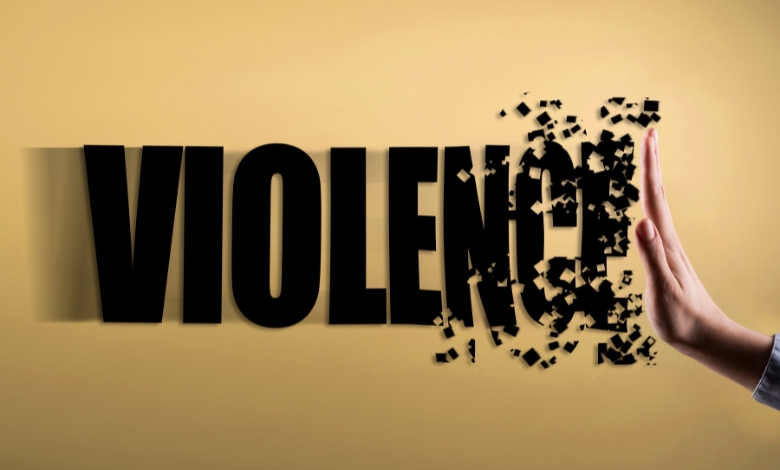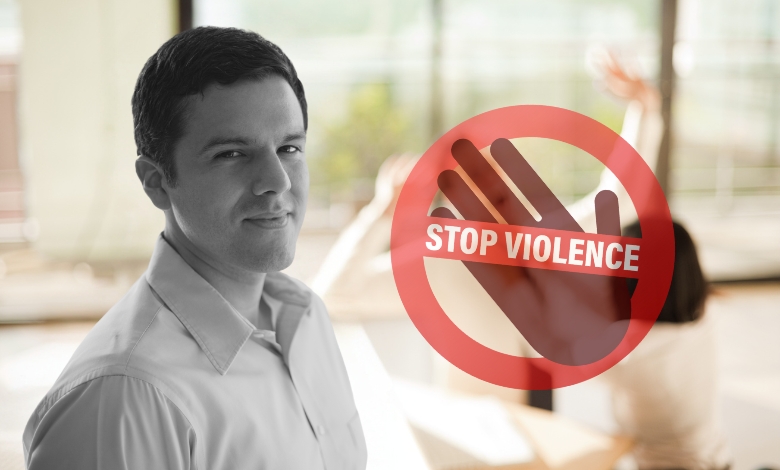Learn about the types of workplace violence, how to identify them, and effective strategies to address and mitigate risks.
Like yesterday, I recall my first encounter with workplace violence.
Friday afternoon in our hectic office was generally quiet, everyone getting ready for the weekend.
The room became tense and afraid when suddenly loud voices shattered the typical work bustle.
Usually calm and courteous, two colleagues were in a furious disagreement that rapidly spiraled out of control.
One of them quickly changed the uncomfortable to dangerous situation by grabbing a pair of scissors from the desk.
Having more than fifteen years of expertise in Human Resources, I underwent extensive conflict and emergency handling training.
Still, this episode tested me unlike anything else.
I moved fast in to defuse the matter and ensure everyone was secure.
This incident helped me to see the need to aggressively and extensively address workplace violence.
Since then, I have concentrated my work on researching several forms of occupational violence, identifying hazards, and developing sensible preventive plans.
Workplace violence can strike anywhere and range from mild intimidation to overt physical threats.
I want to impart what I have discovered and useful strategies to assist you in establishing a more respectful and safer workplace for everybody in this book.
Let’s start right now.
Article Breakdown
What is Workplace Violence?

Any act or threat of physical assault, harassment, intimidation, or other threatening disruptive behavior occurring at the workforce is considered workplace violence. It spans threats and verbal assault to physical assaults and murder.
Millions of workers are reportedly impacted by occupational violence annually, according to the Occupational Safety and Health Administration (OSHA), which raises serious issues for both employers and workers equally.
Categories of Workplace Violence
Four main categories help to define workplace violence:
Type I: Criminal Intent
I remember a tale about a little petrol station in my hometown that was targeted during a late-night theft. Working alone, the cashier came upon an armed intruder demanding money. Fortunately, the fuel station included panic buttons and security cameras. These steps let the authorities react fast to capture the offender without injuring the cashier.
In Type I events, the offender has no official contact with the company or staff members. Usually, the violence serves as incidental accompaniment to another crime, including trespassing or robbery. Particularly vulnerable to this kind of violence are retail outlets such banks and convenience stores.
Type II: Customer/Client
One of my past employers as a customer care agent came across a very irate client who started vocally attacking his problem when it couldn’t be fixed right away. Having received training, I was able to defuse the matter by staying cool and sympathetic, therefore resolving his issue without more conflict.
Type II violence is that of someone who legitimately interacts with the company and turns violent while under business service. Customers, consumers, patients, students, and prisoners are among this kind of patrons. Workers in social services and healthcare especially run great danger.
Type III: Worker-on-Worker
Two colleagues had a long-standing conflict that periodically interfered with team meetings at a past office employment. The dispute heated one day and HR had to step in. They set up conflict-resolution meetings so that both sides may better relate to one another and operate more peacefully.
Worker-on-worker violence is the attack or threat made by one employee against another either past or present. This kind of relationship is usually connected to either professional or personal disputes in the workplace. Organizations must create a good work atmosphere if they are to reduce these hazards.
Type IV: Personal Relationship
One friend of mine once told me that her ex-partner began showing up at her office and making threats. The firm answered by stepping up security protocols and giving her tools to get a restraining order. Her colleagues were also trained on how to manage possible contacts, therefore guaranteeing their safety as well as hers.
This kind of workplace violence consists of someone having a personal relationship with the intended victim but not directly connected to the company. Incidents of domestic abuse sometimes find their way into the workplace, impacting not just the intended victim but also their colleagues.
Types of Workplace Violence Incidents
Prevention and intervention depend on an awareness of the several forms of incidences of workplace violence.
Common forms include these:
Verbal Threats and Harassment
Once under pressure, a manager once berated a team member front-of-sight for everyone. The episode left the team discouraged and less effective. The manager was obliged to attend leadership development following incident reporting to HR, therefore fostering a more polite and encouraging workplace.
Just as harmful as physical assault can be verbal threats and harassment. This group covers shouting, insults, and other kinds of verbal abuse that sour the workplace.
Intimidation
I had a colleague whose manager would regularly stand too close and use a menacing voice whenever she asked time off. Her discomfort and anxiety grew out of this conduct. She reported these events to HR after recording them, and she helped them to handle the matter such that it never happened once more.
Intimidation is behavior meant to frighten or force someone. This can cover sending threatening emails, acting aggressively with your body language, or other non verbal threats.
Physical Assault
One industrial worker once told me that a small argument with a coworker turned physical. The company’s quick reaction included suspending the offender and providing conflict resolution courses meant to stop more occurrences.
Any unwelcome physical contact—that is, hitting, pushing, or any kind of physical violence—physical assault is This kind of aggression calls for quick response since it might cause major injury.
Homicide
Working in a corporate office, I learned about a sad event at a nearby company when an employee who had been let go returned and carried out a violent deed. This tragedy made clear that our business has to go over and improve our support systems and security procedures for staff members about to be let go.
Though rare, homicide is the most extreme type of workplace violence. Unresolved problems, unhappy workers, or outside threats can all cause it.
Addressing Workplace Violence
Following a particularly trying time at work, my firm instituted an Employee Assistance Program (EAP) providing private counseling and support tools. For people juggling personal and professional obligations, this program greatly raised morale and offered a vital support system.
Stopping and handling workplace violence calls for a multifarious strategy including policy formulation, training, and a friendly work environment.
These tactics are some things to give thought:
1) Policy Development
Provide well defined policies covering appropriate behavior, reporting protocols, and penalties for violent actions. Make sure every staff member understands these procedures and knows how to anonymously document events.
2) Safety Training
Regular safety training courses should teach staff members how to spot indicators of possible violence, defuse conflicts, and defend others and themselves. Set up role-playing exercises to hone replies.
3) Legal Compliance
Verify that your company’s policies follow local, state, and federal rules about workplace violence. Review and update these policies often to represent changes in the legislation.
4) Support Systems
Provide staff members impacted by workplace violence support networks. Counseling services, support groups, and legal resource access might all fall under here.
5) Reporting Mechanisms
Create well defined reporting systems that let staff members safely document instances of workplace violence. Make sure reports are given great attention right away.
6) Security Measures
We had a break-in attempt after hours in a prior job. After this event, the business made investments in upgraded alarms systems, surveillance cameras, and better lighting to make everyone feel more comfortable.
Install security cameras, alarms, and safe access points to discourage possible offenders and guarantee a quick reaction should an issue occur.
7) Conflict Resolution
Advance a culture of honest communication and conflict resolution. With the help of qualified mediators if needed, inspire staff members to resolve problems early on and creatively.
8) Mental Health Support
Once a colleague suffered from anxiety following a verbal attack by another coworker, Her well-being and output were much improved by the company’s provision of access to a mental health specialist who guided her in creating coping mechanisms.
Acknowledge how workplace violence compromises mental health and offer tools to help those impacted. Counseling services, stress management techniques, and mental health awareness-raising seminars can all fit here.
Frequently Asked Questions (FAQs)
1. How Many Different Types of Workplace Violence Incidents Are There?
Usually, four basic forms of workplace violence episodes are criminal intent, customer/client, worker-on-worker, and personal relationship. Every kind has special qualities and calls for different approaches of prevention and reaction.
2. What Are the 4 Types of Workplace Violence?
Four different forms of workplace violence exist:
- Type I: Criminal Goal
- Type II: Consumer or Client
- Type III: Worker on Worker
- Type IV: Human Relationship
3. How Many Types of Workplace Violence Are There?
Four main forms of workplace violence exist, each with unique qualities and risk factors. Knowing these kinds helps companies apply sensible responses and preventive plans.
4. How Many Different Types of Workplace Violence Are There?
Four primary forms of workplace violence can be distinguished: criminal intent, customer/client, worker-on-worker, and personal relationship. Every kind stands for various situations and calls for particular strategies for intervention and prevention.
Wrapping Up
A safe and encouraging workplace depends on an awareness of and resolution for the several forms of workplace violence. Organizations can reduce hazards and guarantee employee well-being by means of thorough policies, frequent training, and strong support systems development. Being proactive not only shields people but also helps everyone to have a better, more efficient workplace.



